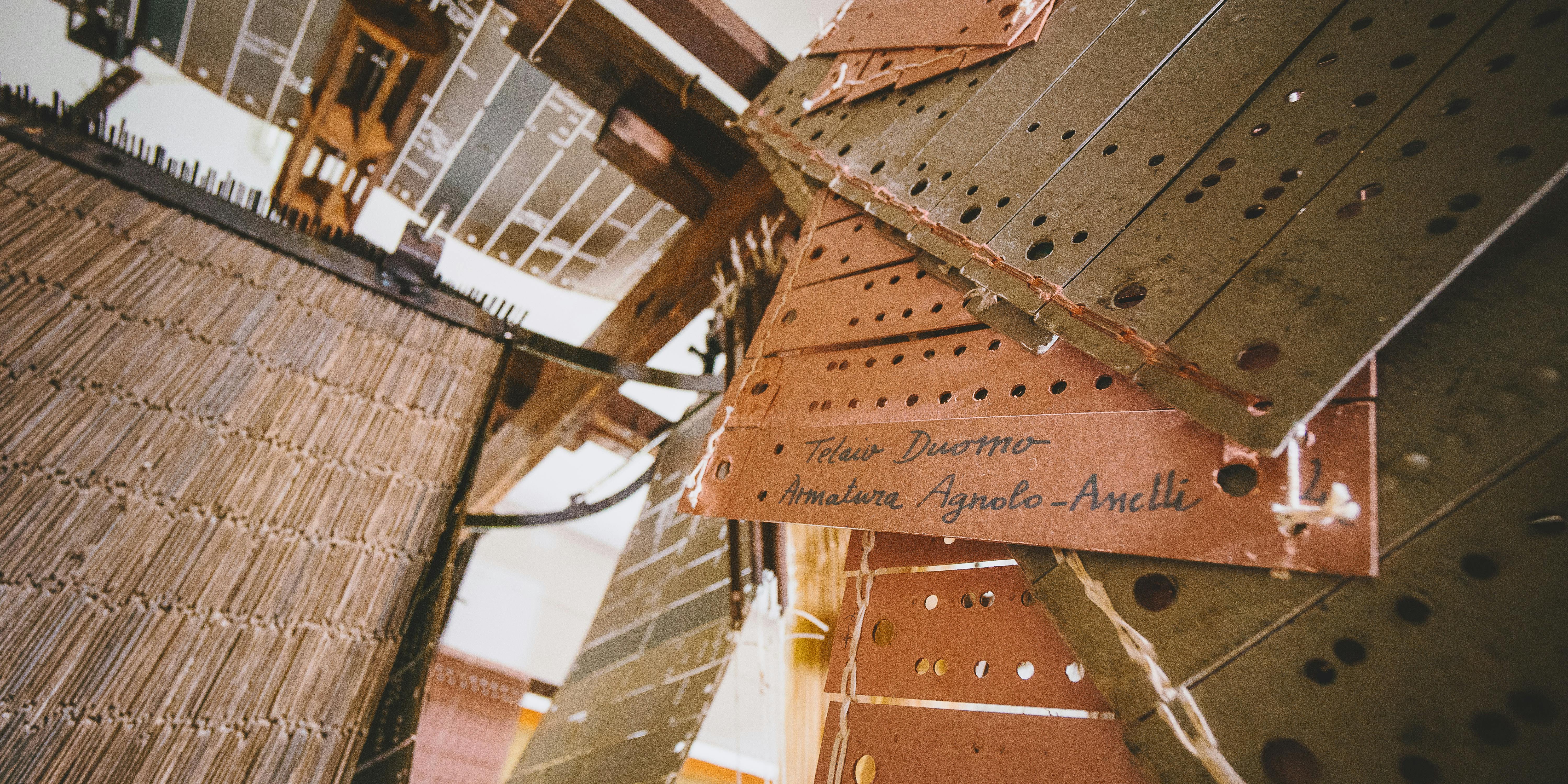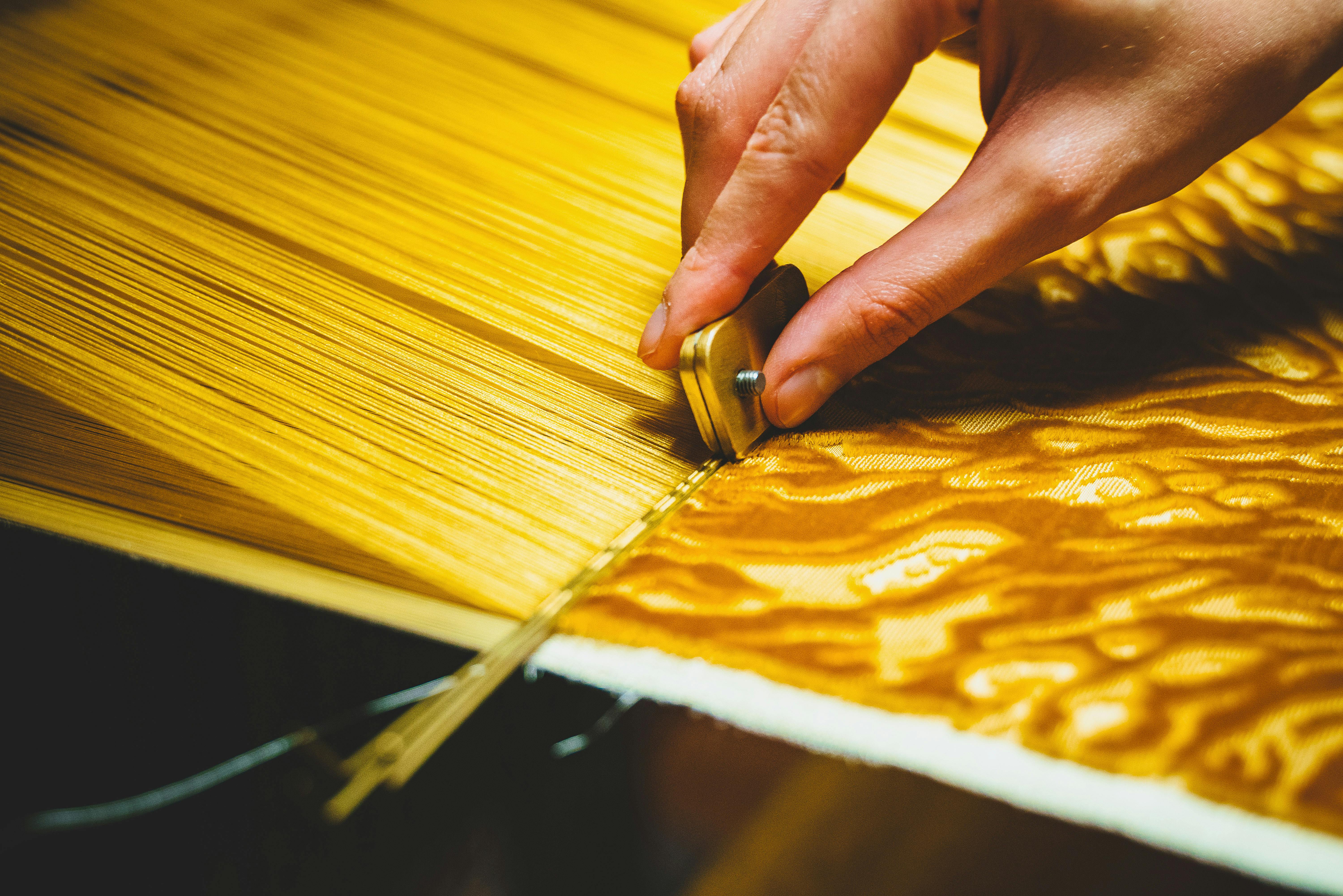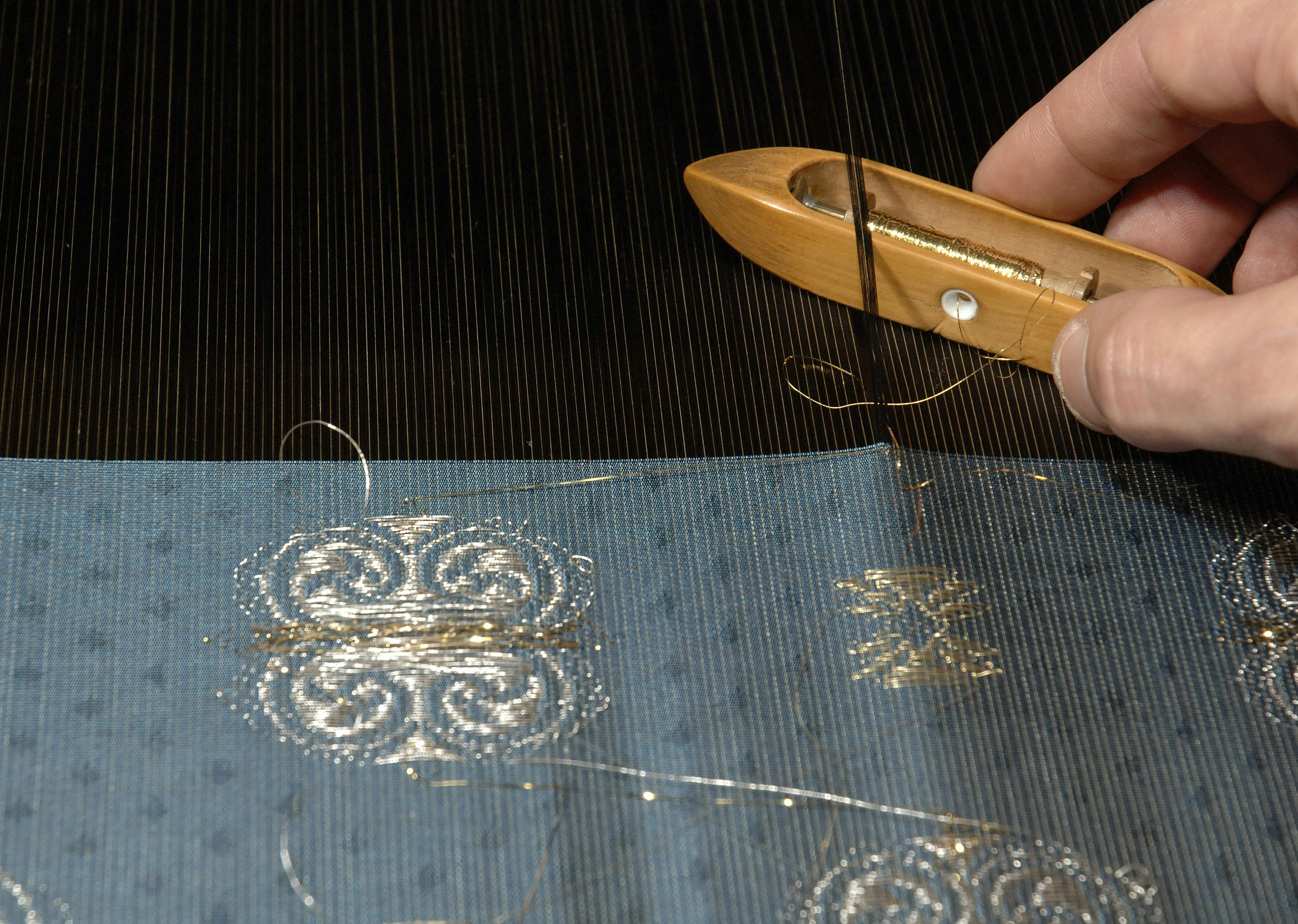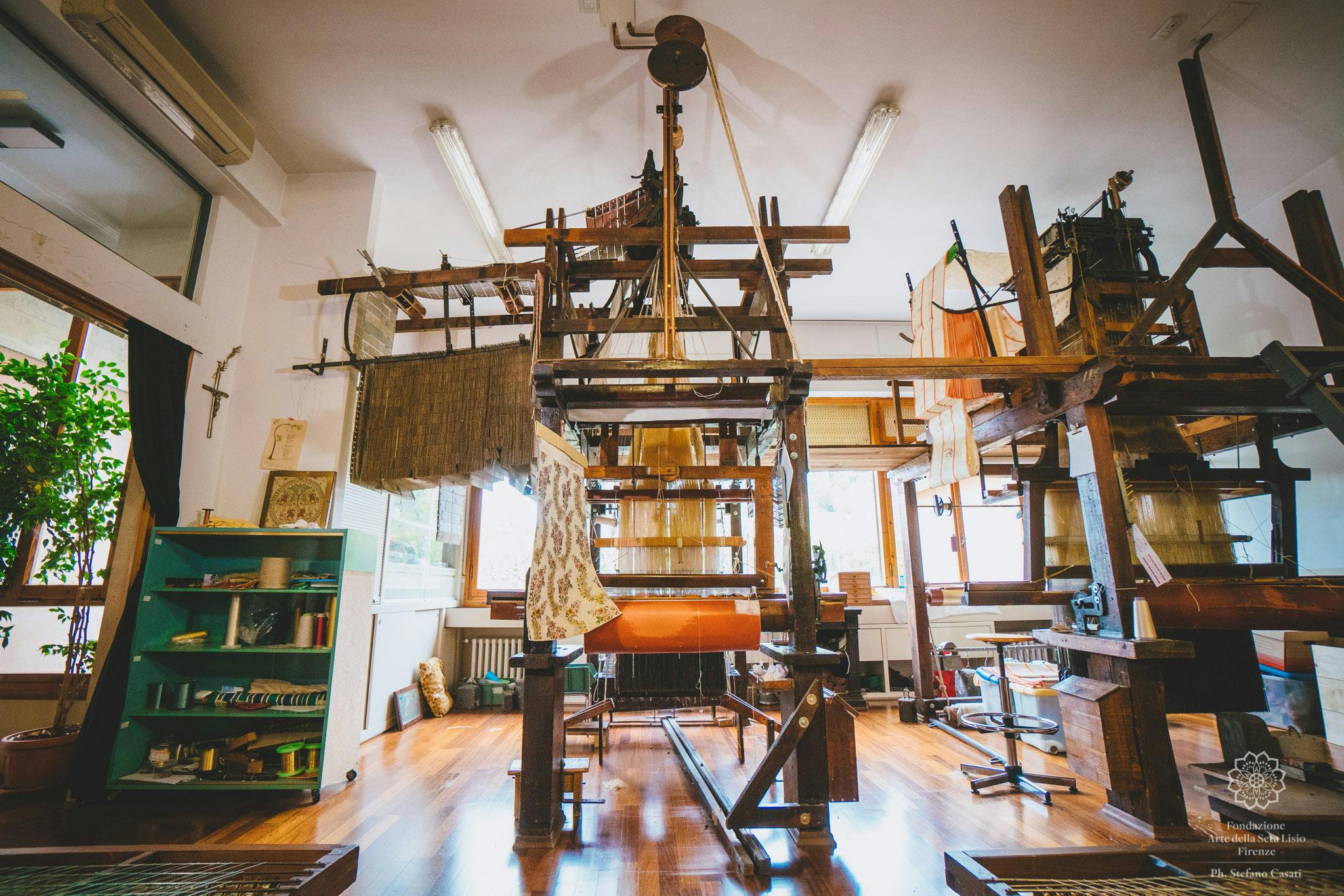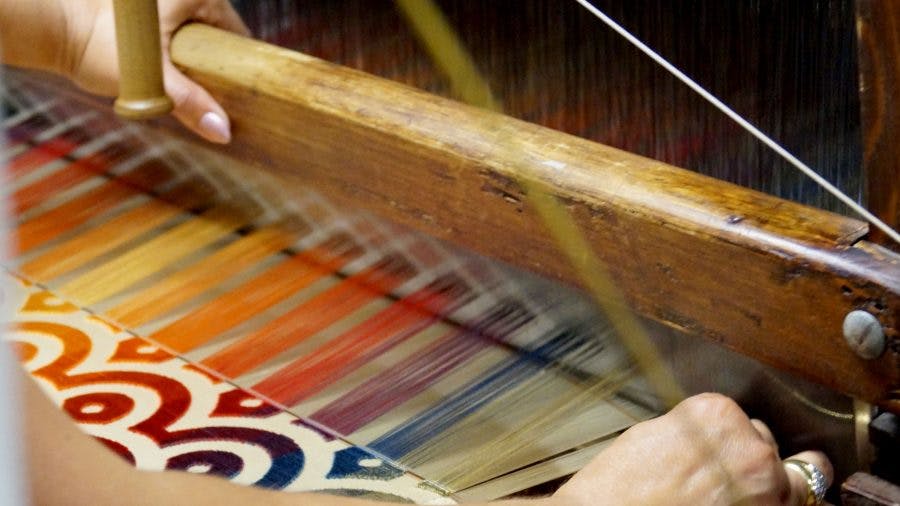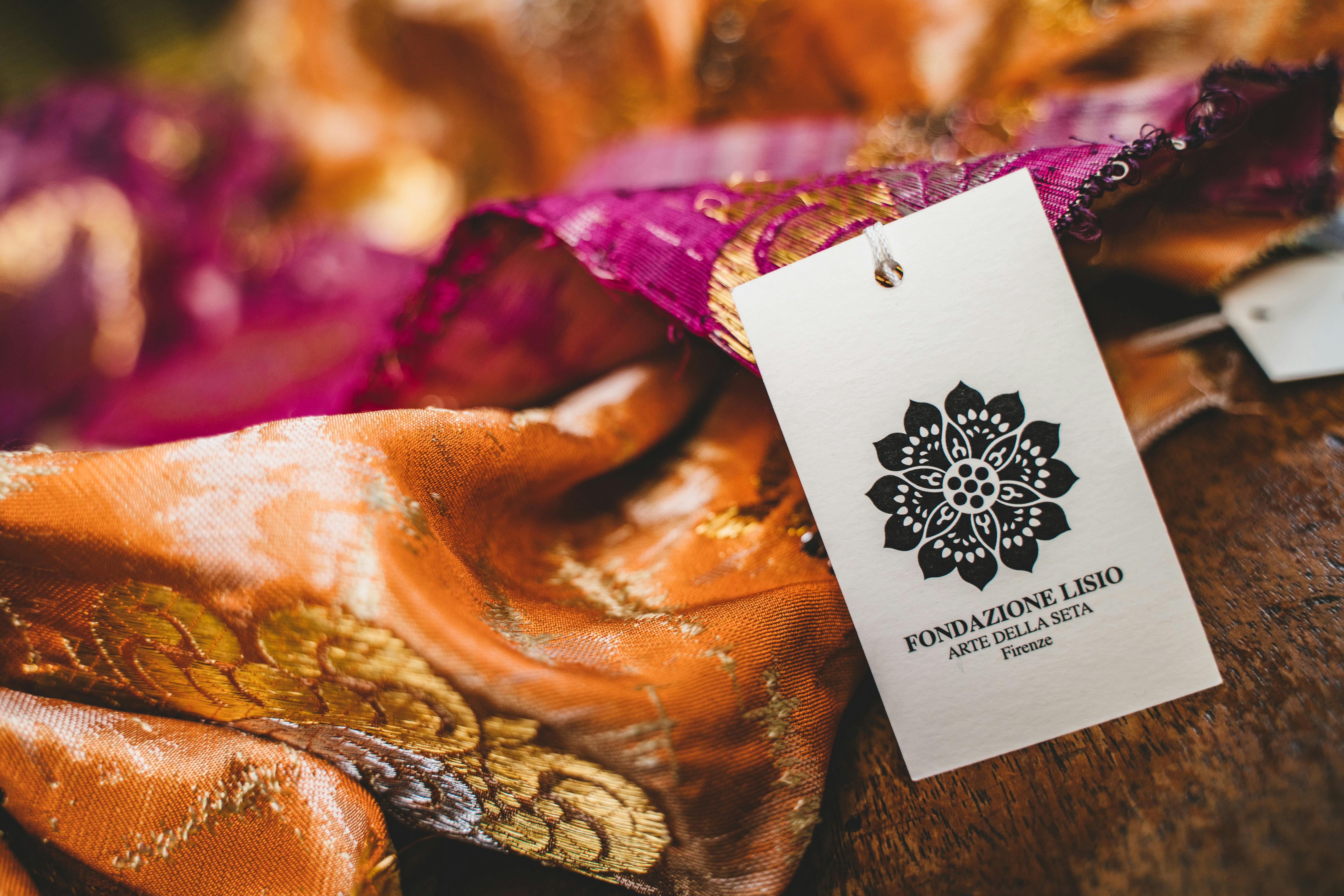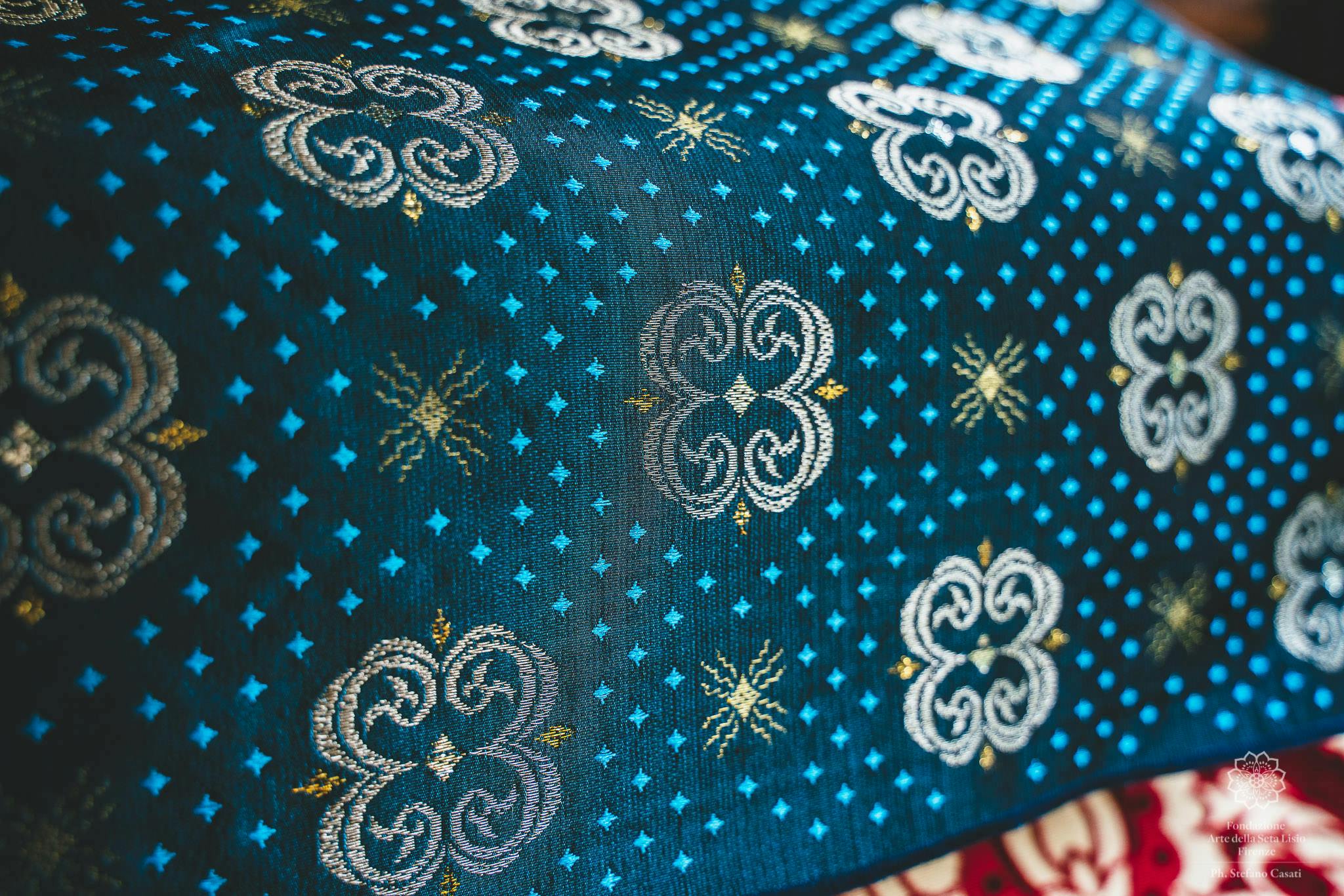Our production activity centre on those types of fabrics that manifest effects with no equals in industrial production, such as brocades and figured, ciselé and polychrome velvets.
The first stage in the lengthy process of production of a hand-woven velvet or brocade is preparation of the hand-operated loom.
A total of eleven steps are required: from dyeing of the silk – carried out only and exclusively in Italy – to creation of the Jacquard cards, to threading the loom for the ground warp (preparation of the spools, creation of the warp and rolling on the back beam) to preparation of the bobbins for the pile warp (according to loom type, from 800 to about 3600 bobbins).
